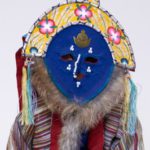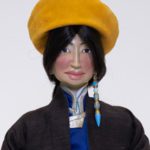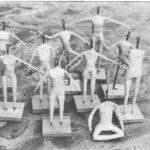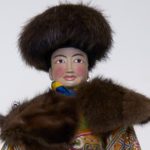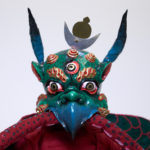Lhamo Opera
Although accounts differ as to the origin of Tibetan opera, its founding is popularly attributed to Thangtong Gyalpo, a 14th century Tibetan Buddhist monk and bridge builder.
According to tradition, Thangton Gyalpo wanted to build iron suspension bridges throughout Tibet to increase communication and help spread Buddhist philosophy. To help raise the money needed, he trained 7 beautiful girls (who were sisters) to perform dances to operatic arias that he had composed. The sisters joined Thangton Gyalpo on his journeys throughout Tibet, performing songs and dances, accompanied by Thangton Gyalpo on a drum and cymbals. Through the years, he earned sufficient money to build more than 50 bridges in Tibet.
Over time, other troupes staged similar performances and, as the arias and stories were passed down in writing, a distinct repertoire of Tibetan Opera emerged—based on Buddhist philosophy and stories from Indian mythology and Tibetan history.

Traditional Lhamo opera (translated as “sister goddess”) required performers to be highly skilled in singing, dancing, elocution, and certain martial arts. While the operas had few scene decorations or props, and music accompaniment was limited to a drum and cymbals, the engaging stories, combined with elaborate costumes and masks, captivated audiences, holding their interest throughout each performance—many of which lasted up to 3 days.
Staged outdoors, during Tibetan harvest festivals, a Lhamo opera began with a ceremonial purification of the stage, blessings to a deity, and praises before a prominently placed image of Thangton Gyalpo. Then, a narrator summarized the plot for the audience, followed by the dancers and singers, who perform the opera to its conclusion. For the finale, the performers sang blessings and distributed hada, small white ceremonial scarves, to the audience as a sign of sincerity and respect.
Since 1959 the Tibetan Institute of Performing Arts (TIPA) has been active in preserving and renewing traditional Lhamo opera in the Tibetan exile communities, as well as on the international stage.


